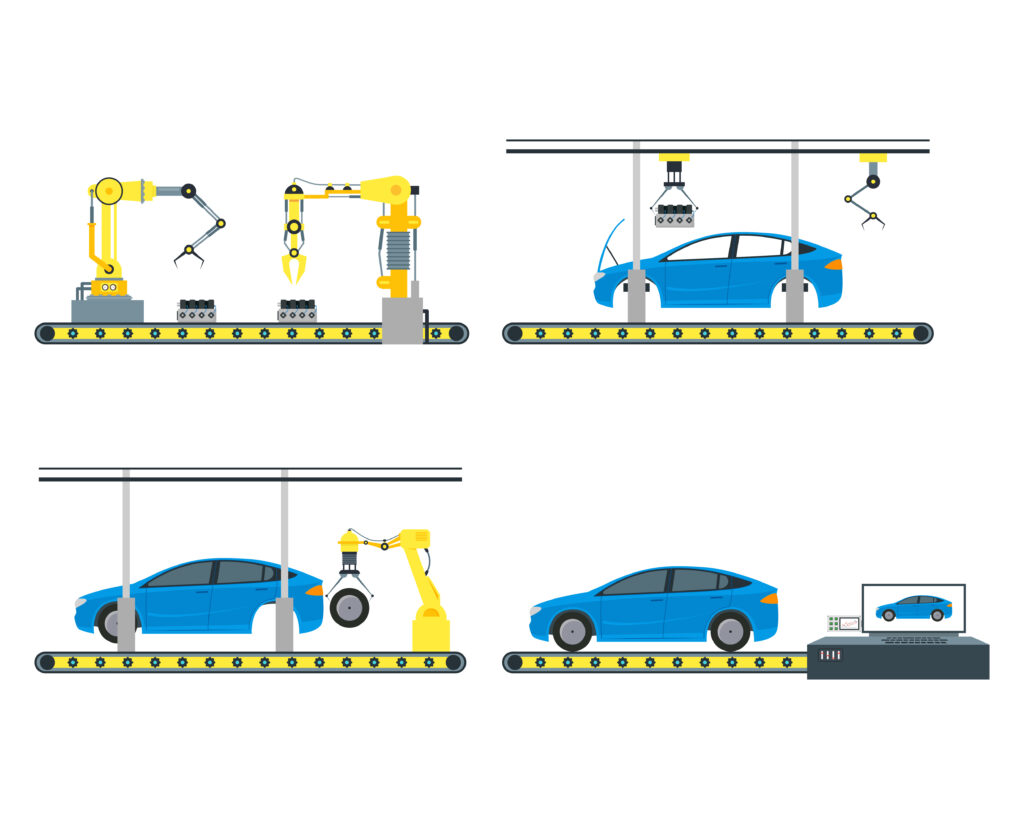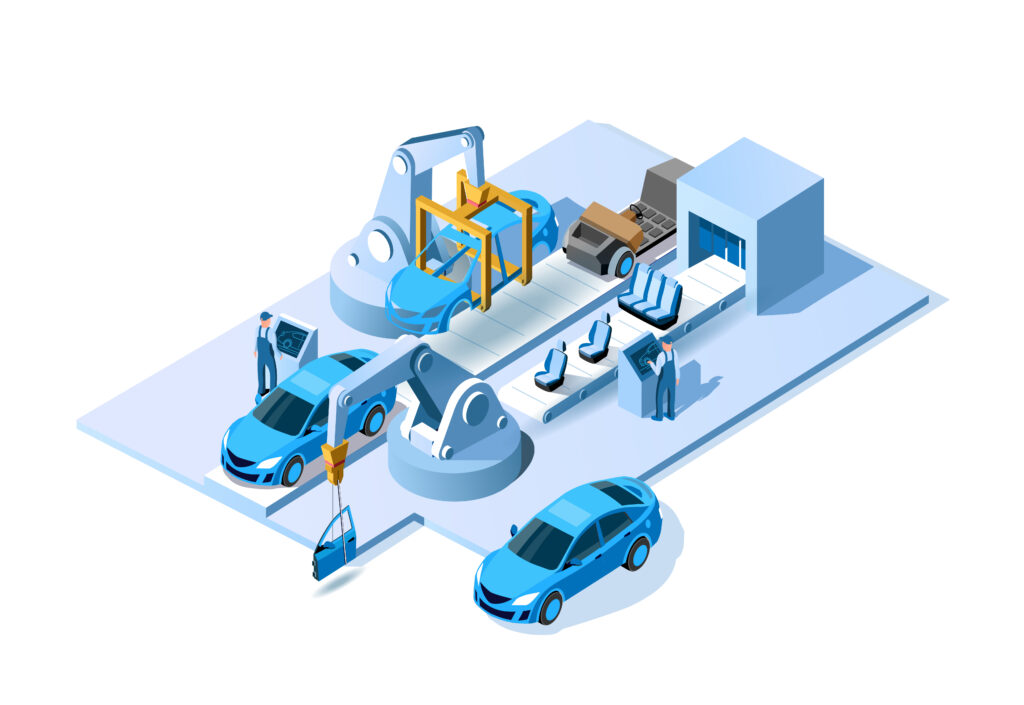Being at the forefront of manufacturing innovation, the automotive industry has also been one of the most advanced sectors when it comes to IoT applications. From autonomous cars, connected vehicles, and infotainment, to fleet management and automatic maintenance, the IoT use cases in automotive are vast and intriguing.
However, similar to the aerospace industry, the automotive is also confronted with managing complex assembly lines. Due to historical and economic reasons, production is usually scattered over multiple locations, countries, and continents. Because different parts are produced in different places and managed by different suppliers, processes get difficult to manage or optimize.
Now, try to imagine all the elements needed to assemble one car. Think of parts that are very small, like windshield wipers, but also bigger and more expensive components, such as motor blocks. To transport these parts to different production & assembly points, manufacturers use specialized packaging. As these containers and boxes become more elaborate and designed to transport specific items, they also become more valuable.
Tracking containers, understanding loops
Containers that are typically designed to transport something specific, usually follow the same route or so-called “loop”. From the factory, harbors, and trains to highways, these containers are always moving in loops. But even if you have the same container and the designated route, each loop can be different. Some might take 10 days, while others several months. The manufacturers can rely on different suppliers and stakeholders for information and updates, but often they won’t have clear and accurate insights into the exact whereabouts of the container and the status progress of the loop.
The real problem is that most companies rely on outdated manual systems for managing these containers and following their loops. Counting the containers by using Excel sheets or scanning the barcodes isn’t only tedious and a waste of resources, but it also leaves room for human error. Additionally, companies don’t have an actual overview of the fleet. This brings us to another issue…If there are no specific containers available for the next shipment, companies usually don’t have time to search for them. One of the solutions is to purchase a new one to avoid blocking the supply chain processes. In other cases, companies proceed with the transport of the items, but in unsuitable boxes which damage the valuable goods. This, obviously, brings extra costs. And even if the delivery goes through, the first question remains: “Where is the container — and in what condition?”.
Here is where things get interesting…
Companies often overlook the potential the transportation boxes and containers have. If we can track them as they move, we can also control the goods they transport while increasing visibility into the supply chain.
The containers can help companies answer crucial questions, such as: “Is my supply chain running smoothly? How and where can I make improvements?”. So, when a car company starts to monitor the loops, containers, and their content, they will begin to understand how to improve all the processes and potentially reduce the total time needed to produce a car, saving substantial financial assets.

Shifting the mindset
A track and trace system is ideal for managing a complex ecosystem of suppliers and subcontractors. To further encourage transparency, some companies in the automotive share their data with other players in the ecosystem (e.g. suppliers and end customers) so that everyone can benefit from the increased visibility and optimizations. By “opening up” and granting access to supply chain data, every stakeholder in this supply chain can also gain business benefits.
Sensolus offers a complete solution to connect and manage your non-powered assets. We help companies worldwide know exactly where their assets are, how they are used, and how they can be utilized better. We do this by gathering data with our battery-powered trackers that are easy to install and work anywhere for five years. As they don’t require any infrastructure, you can quickly scale from a small proof of concept to a full-sized project. Once your assets transmit data to the cloud, this information is then filtered in our powerful analytical platform.
With our comprehensive solution, businesses know where their assets are, detect issues in processes, and ensure better visibility when working with contractors or customers. A connected asset management system like Sensolus, helps automotive businesses resolve the blindspots in their operations, opening space for further improvements in business processes.
Improving transparency and compliance, controlling loops, saving time and money, reducing the number of lost containers, and extending their lifetime are just a few benefits companies get after implementing the tracking system. Even though companies can have different priorities, in the end, they achieve a combination of various perks.
Let’s sum up the benefits:
- Monitor vehicles and parts during production: Get precise location data on each part to move ahead with production smoothly and eliminate production delays and bottlenecks
- Automate vehicle yard management: Minimise time searching for the finished vehicle
- Improve lifecycle & utilization of containers: Analyze container lifespan better and identify containers not being used correctly
- Reduce the number of lost containers: Obtain a clear overview of the production line and reduce the yearly cost of new containers.
- Apply valuable data and make smarter business decisions: Rely on the data-driven platform for better reporting & accurate analysis to optimize your processes and save money
- Improve accountability: Identify any delays in the supply chain. Determine any damage at the exact location and calculate repair costs to be paid by responsible parties.
The automotive industry might still be in the early stages of implementing the supply chain optimization system, but things are definitely changing. More and more companies are deciding to monitor their loops and containers with a more automated, connected, and accurate system. This way, they can also understand better how to improve other processes and reduce the total time needed to produce a car, saving money and gaining a competitive edge.
